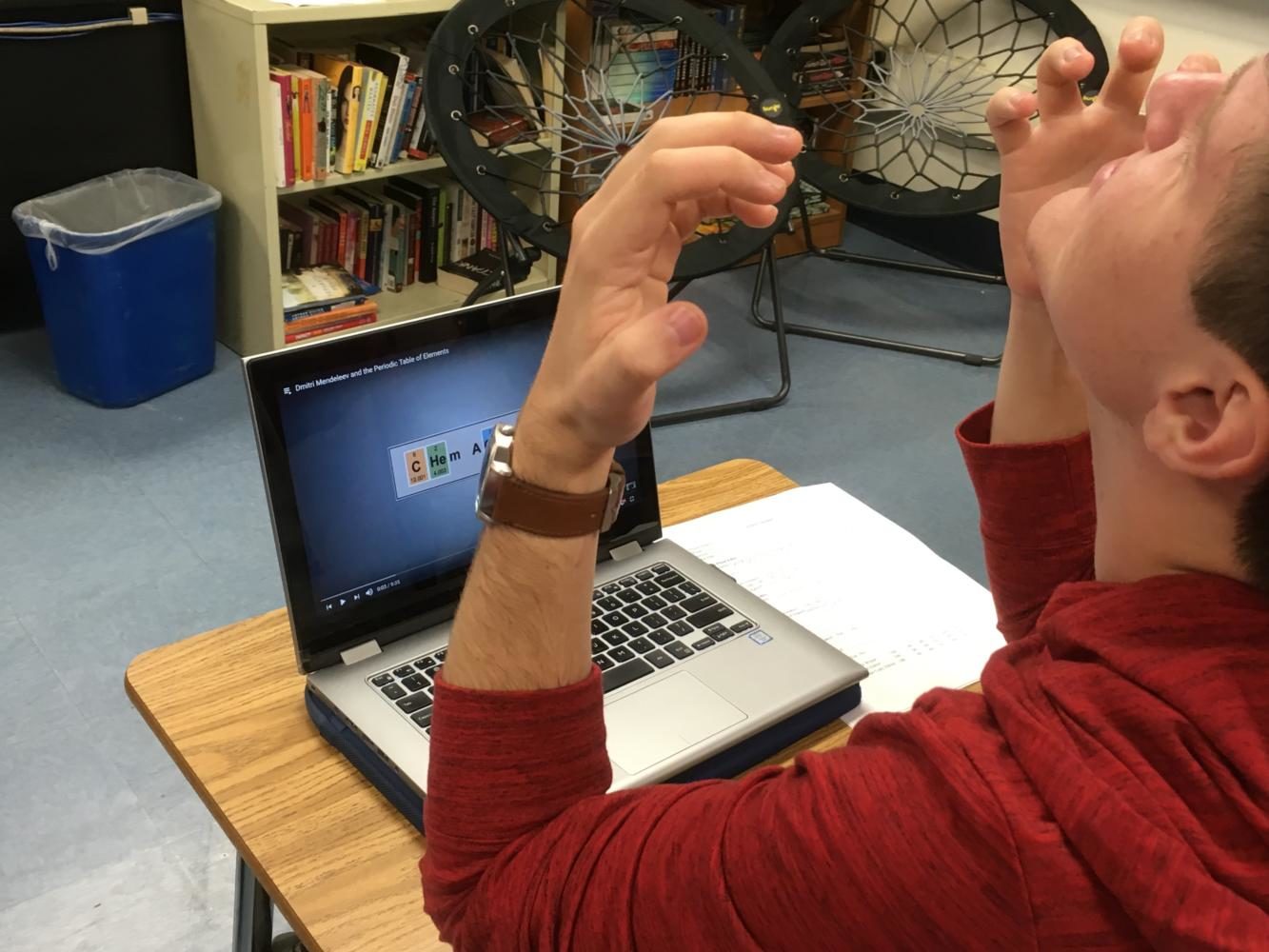Online Chemistry: Revisted
With the onset of a new school year, changes have been made to the Chemistry program to improve its online component. However, there are still problems in the overall way the course runs that many students wish to see addressed.
Any student in Mr. Glancy or Mr. Millings’ current Honors or regular Chemistry classes knows they aren’t in a typical science class – it’s mostly online. Last year, in Online Chemistry: The Flawed Format, the Ubiquity covered in-depth advantages and disadvantages of the Chemistry program’s move to the Internet.
One major problem with the format was the lack of a designated set of ChromeBooks for Mr. Glancy’s class. Glancy needed to coordinate with other teachers to get a cart of laptops in case his students were taking tests or conducting online labs. Students had to resort to using their phones to do homework online, which caused formatting problems and served as a distraction.
Luckily, this problem has been addressed, and Glancy has received a designated set of ChromeBooks. There are enough laptops for each student, so there’s more of an incentive for students to do their work in class without distractions.
Last year, the Chemistry teacher that doesn’t use the online format, Dr. Smoot, taught only regular Chemistry classes. Honors students lacking access to the Internet at home were disadvantaged, and some were unable to take the higher-level course with the weighted GPA. This year, Smoot is teaching Honors Chemistry as well, so ambitious students can learn the material without the online component.
While these problems have been addressed, there are aspects to the Chemistry program that have been disputed since the prior article’s publication, particularly in regards to labs and primary forms of instruction. To address this confusion, the Ubiquity conducted a poll to gain student opinions. The survey was posted to the Ubiquity’s social media to gain junior and senior’s views. To make sure actual students were answering, school emails were required for the poll.
Of course, there are limitations to the poll, as it primarily targeted students with social media accounts. Students of Dr. Smoot who lack Internet access didn’t have the same opportunity to take the poll, so the majority of respondents took Chemistry with the online component. Further, upperclassmen, especially seniors, may not remember particulars to answer some questions, so their responses must be taken as rough estimates. Nevertheless, the answers are all from students, and the sample was large, consisting of 52 students.
One point of contention was the actual classification of the Honors and regular Chemistry classes. Some believe they should be considered physical classes, as the teachers lecture and students perform physical labs. However, others believe they should be called online courses. The Internet is important for homework and tests (which is why Millings and Glancy have designated ChromeBook carts for their classes) and YouTube videos are an essential supplementary tool.
Twenty-three former students of Mr. Millings, eleven juniors and twelve seniors, took the poll. Nearly unanimously, 87% of these students said they took what they would classify as an “online class.” Fifteen of Glancy’s former students, eleven seniors and four juniors, responded, and 86.7% called it an “online class.” Six former students of Mr. Harris’s regular and Honors Chemistry class responded, and 83.3% considered it an “online class.”
Another dispute arises upon examining the primary form of instruction. During class, teachers give students notes to take in addition to their lectures on the course material. Altogether, this usually amounts to approximately twenty minutes of the class period, giving students the rest of the class period (about forty minutes) to complete their daily assignment and ask questions.
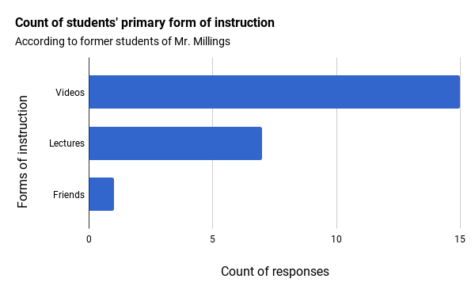
Mr. Millings also provides instruction in the form of YouTube videos. These videos are designed to supplement the lectures, and they are available to the students as a resource. The main dispute that arises in this instance is which form of instruction is most integral for the students.
According to former students of Mr. Milling’s classes, the primary form of instruction was the YouTube videos (fifteen of the twenty-three respondents voted for videos as the main form of instruction). Only seven students voted for lectures as the main source of learning, and one voted for friends.
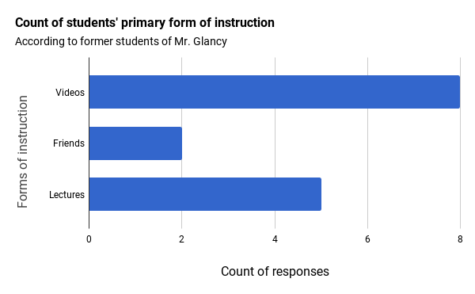 On the other hand, eight former students of Mr. Glancy answered that videos were the primary form of instruction. The secondary source was the lectures with five votes, and receiving the least again was friends. One should be more careful in drawing conclusions from this data since the sample is smaller than that of Mr. Millings.
On the other hand, eight former students of Mr. Glancy answered that videos were the primary form of instruction. The secondary source was the lectures with five votes, and receiving the least again was friends. One should be more careful in drawing conclusions from this data since the sample is smaller than that of Mr. Millings.
Mr. Harris was the teacher that the least amount of former regular and Honors Chemistry students responded for, but four students voted for lectures as the primary form of instruction in his class. One student voted for friends and another for videos. More so than Glancy’s statistics, the data is too sparse to draw solid conclusions.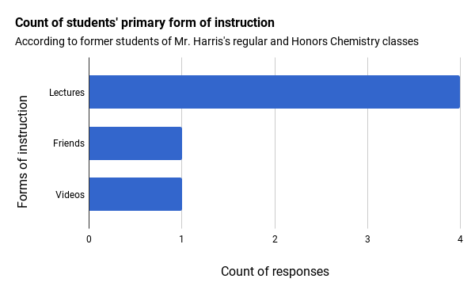
Overall, 24 of the 44 former students in online Chemistry classes, a slight majority, stated that they primarily learned through videos. While the teachers do lecture, their students may be distracted from the lessons by the videos. The temptation of the open assignment and the ability to quickly view the procedure in a video compels some students to ignore the teachers as they complete the homework independently. Doing so, they may learn how to do the math problems in the homework, but they miss the teachers’ lesson of the application of that math. Others turn to the videos because they don’t understand the teachers’ explanations.
Another major point of contention is the number of physical labs performed in the classes with the online component. While Mr. Glancy primarily performs online labs with occasional physical labs, Millings emphasizes that he actually does physical labs in class. The curriculum calls for thirteen labs to correspond with thirteen units.
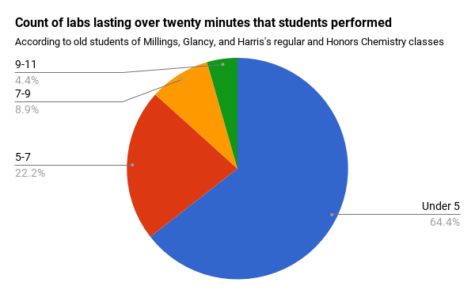 The amount of labs performed, however, is not high, according to former students. In the poll, respondents were asked to state the number of physical labs they personally performed that lasted over twenty minutes. In all three classes, 64.4% of students, the majority, answered that they performed under five labs. The next largest margin, 22.2%, responded that they did five-to-seven labs. About 9% answered seven-to-nine labs while 4.4% said they did nine-to-eleven labs. These general statistics mirror the specific counts for each of the three teachers. Overall, 72.7% of the 44 students in online Chemistry wish they had performed more physical labs.
The amount of labs performed, however, is not high, according to former students. In the poll, respondents were asked to state the number of physical labs they personally performed that lasted over twenty minutes. In all three classes, 64.4% of students, the majority, answered that they performed under five labs. The next largest margin, 22.2%, responded that they did five-to-seven labs. About 9% answered seven-to-nine labs while 4.4% said they did nine-to-eleven labs. These general statistics mirror the specific counts for each of the three teachers. Overall, 72.7% of the 44 students in online Chemistry wish they had performed more physical labs.
To put these lab numbers in context, Mr. Millings performs labs under fifteen minutes or does quick demonstrations, which were discluded by the question. Further, Mr. Glancy has students perform virtual labs, which are excluded by the question as well. The survey called for a count of in-depth, hands-on experiments that students performed.
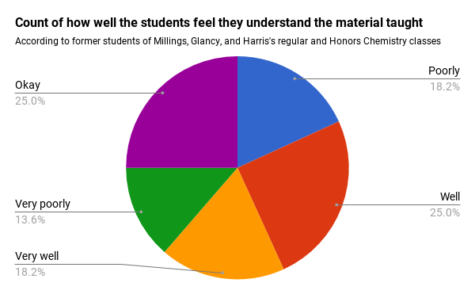 Of the forty-four respondents of the online format, about 31.8% answered they comprehend the material poorly or very poorly. Exactly 25% feel “okay” in their understanding, and about 43.2% feel they know the information well or very well. These overall statistics roughly mirror the responses for each of the three teacher’s classes, although of the students of Harris (the teacher with the smallest sample), 50% said they feel well or very well about the content.
Of the forty-four respondents of the online format, about 31.8% answered they comprehend the material poorly or very poorly. Exactly 25% feel “okay” in their understanding, and about 43.2% feel they know the information well or very well. These overall statistics roughly mirror the responses for each of the three teacher’s classes, although of the students of Harris (the teacher with the smallest sample), 50% said they feel well or very well about the content.
Although only five former students of Dr. Smoot, who still teaches her class traditionally, took the poll, three of those five stated they understood the content very well, while one answered “okay” and other responded “very poorly.” These statistics, of course, are based on too small of a sample to draw conclusions. Further polling is required to gain an accurate comparison of the traditional class and the class with the online format.
If they could go back and change the format of their class, 54.5% of the students who took online Chemistry wished they could have taken a traditional, physical class while 31.8% would have stuck with the online format. (The remaining students answered “not applicable.”)
Although these statistics have limitations, they still reflect the opinions of a group of students at the school. These numbers indicate that many were dissatisfied with their experiences in the online Chemistry program, particularly in regards to labs and understanding of material.
Although many comments left on the poll are irrelevant (and involving Mr. Millings’s catchphrase, “Holy schnikes!”), some students provided constructive criticism about the course. One current senior and former student of Mr. Millings, Simone Decker, said, “Online videos were helpful for reference when reviewing or trying to study outside on my own, but I felt a lack of instruction in class was less than ideal. I believe I could have learned more if the class had been less virtual, especially since it is a science class.”
Kaylee Wheeler, a current junior and former Harris student, had similar feelings about instruction: “It was definitely a struggle for me. [For] any concepts that I did not understand, I was told to watch the videos. Being a hands-on learner, I feel as if lectures would have done more justice than just watching a video.”
Many students did write positive comments about the online format. Tanner Baccus, a current junior and former Glancy student, said, “I personally liked the online aspect of the class, as I found it easier to work with and learn from on my own if I didn’t understand from the lecture.”
Current junior Leilani Hallman wrote, “I took Mr. Millings’ Honors Chemistry class my sophomore year and it was my favorite class that year. I enjoyed how organized the class felt and Mr. Millings is a great teacher. If I could take the class again, I would in a heartbeat. It was a very challenging class, but I learned a lot and now I’m taking AP Chem!”
The Quartz Hill Chemistry program has experienced changes for the better this school year, largely due to administration decisions. However, many students felt the day-to-day aspects of the class, particularly in relation to physical labs and instruction, are lacking.
While the Internet is beneficial in giving instantaneous feedback and providing support for lectures, some students feel the online aspect is overwhelming the class. Students see the advantages of the online format, but Chemistry may benefit from steps toward a more traditional format.

Hello! My name is Cody Wilson, and I am the fearless Editor-in-Chief of the Ubiquity! Although I originally joined journalism to draw pictures and write...
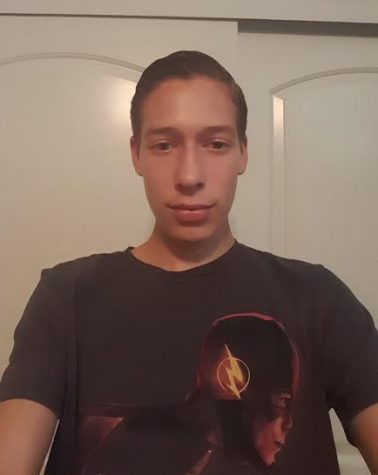
Cole Walls is the humor editor for the QHHS Ubiquity. However, he is actually from Central City and is known as the ‘Fastest Man Alive’ by many. While...



